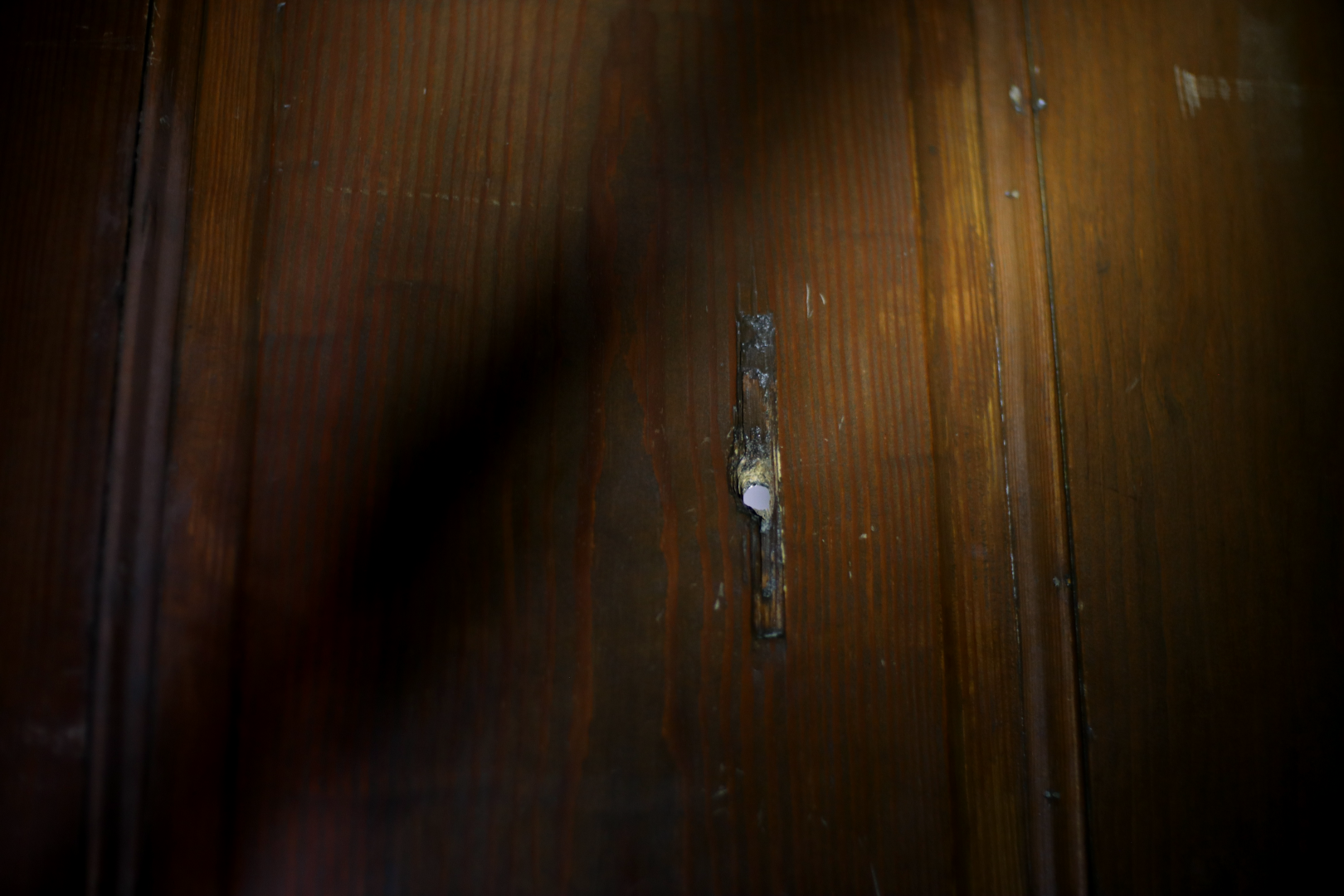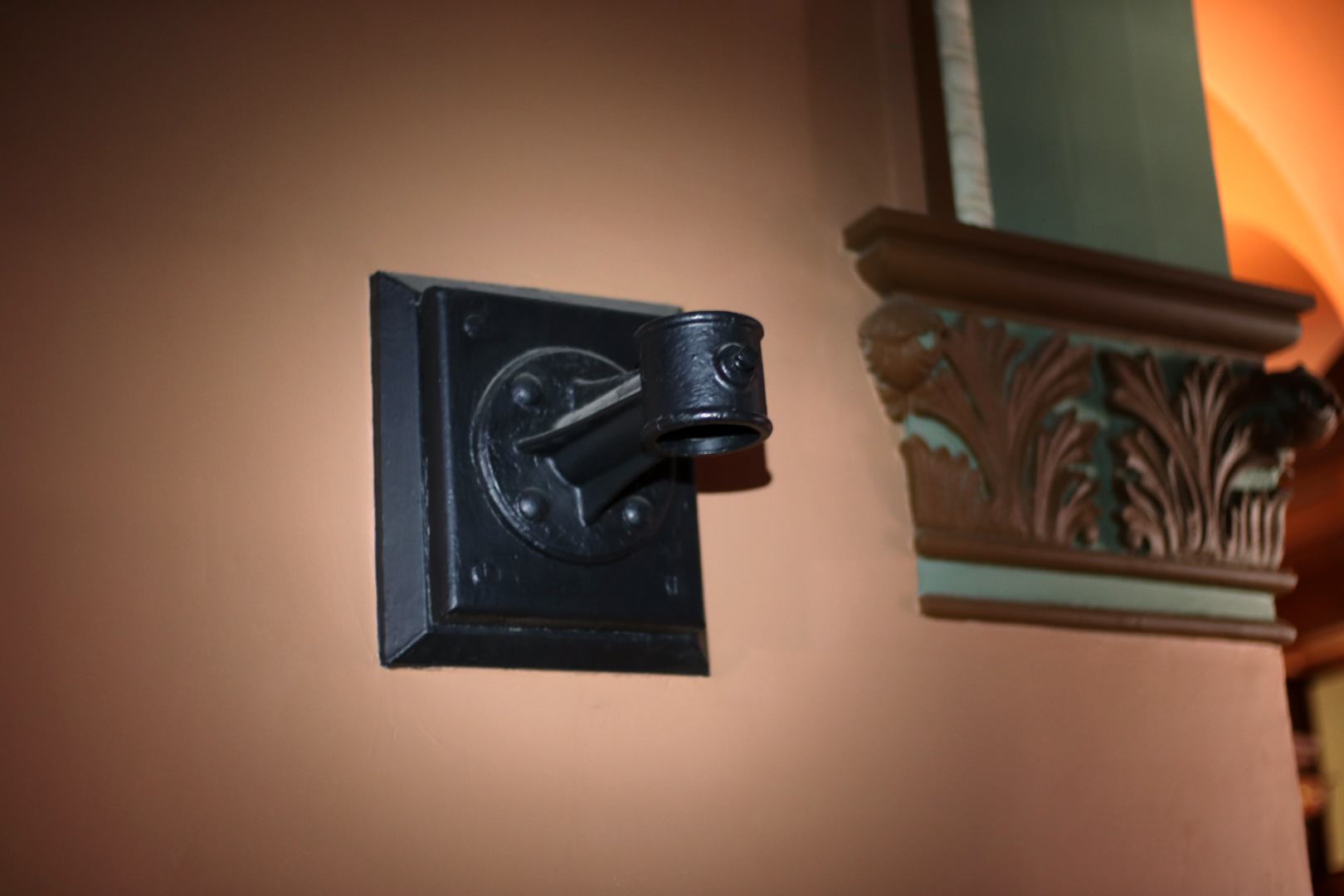

Apart from TV westerns, the Ellis County Historic Courthouse has experienced a few episodes of action by old-time lawmen in real life, as well. You may have noticed that the door you are looking at has a hole in it, and suffice it to say that this room was once the Sheriff’s Office. Allegedly, a Sheriff’s deputy in the 1920’s had brought a prisoner into the Sheriff’s Office for questioning, and the prisoner’s mistress, feigning that she had additional information, smuggled a pistol to the prisoner. The prisoner attempted to shoot his way out of the Sheriff’s Office but was not successful. This story has not been verified by historical record, however, and it is just as likely that the bullet hole was caused by a negligent discharge. In the era when lawmen carried single action revolvers, it was not uncommon for officers & deputies to forget to de-cock their weapons.
On the wall behind you, you will also notice a black apparatus that looks like it was designed to mount something. Whenever imaginative young children attend a guided tour of the courthouse, they often ask if this mount was once used to hold a flaming torch to provide lighting in the courthouse, just as in a Medieval castle. Although they would be wrong, since the Ellis County Historic Courthouse always had electric lighting, these children are not far off base. This mount does, indeed, represent a technological relic of a bygone era – in this case, fire-fighting technology. In the late 19th and early 20th centuries, before the advent of modern fire code and fire suppression systems, preventing the spread of a fire from one building to the others surrounding it was often a communal effort. Making this fire-fighting process as efficient as possible to protect Ellis County’s crown jewel was of primary concern to the citizens of that era – especially those who had survived a catastrophic 1882 fire that devastated the entire northern side of Courthouse Square. The mount here served as a pivot, upon which was affixed a large wheel with a fire hose wrapped around it. One of these fire hose wheels remained ready for use on every floor in the courthouse. Starting on whichever floor a fire broke out, the fire hose on that floor would be uncoiled and run down to the next floor, connected with the hose there, and so forth until being run outside to connect to the fire engine. The fire engines of that era were not trucks, but horse-drawn, hand-pumped foam-water tanks. As a side note, this is actually where the tradition of fire engine “push-in’s” comes from. Because horses could not walk backward to push vintage fire engines into the station, the firemen would have to accomplish this by hand. To this day, whenever a rural Texas town purchases a new fire engine, the firefighters ceremoniously push the engine backward into the station in honor of this heritage.